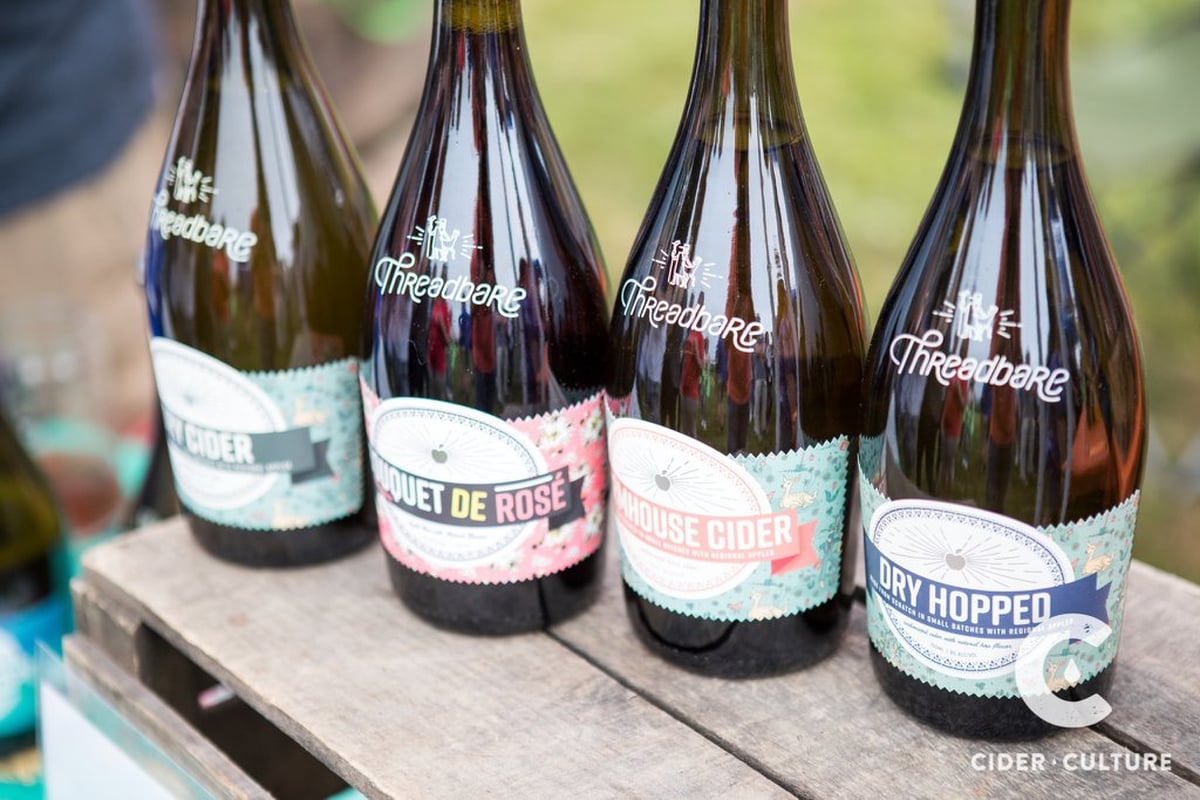
You know the old adage “seeing is believing?” Well, in the retail world, especially where food and beverage are concerned, it’s more like “tasting is believing.”There’s a reason why you see so many culinary companies in markets, pop-ups and festivals sampling their wares: When it comes to specialty goods, consumers need to experience something before committing to buying it. The revelation of a product’s quality — in combination with some well-timed information and education — can truly make the difference between a “no thanks” and a sale.
The theory is almost twofold for craft cider. Although the average consumer may be aware of various types and flavors of wine and beer, there’s still a lot of misinformation, uncertainty and unfamiliarity when it comes to cider. Here at the Pennsylvania Cider Guild, we want our members to be as prepared and empowered as possible, both to introduce their ciders to the world and to make some sales.
We asked Brian Bolzan, the head cider maker at Threadbare Cider in Pittsburgh, for some tips and best practices for cider sampling. This urban cider house was founded in October 2017 and has done a lot of sampling to get the word out not just about its products, but about cider in Western Pennsylvania and beyond.
“Our philosophy is that it’s the best way to get our product in front of consumers, and it’s also the best way to start a conversation,” he said. “We’re a new company, and sampling is a good way for us to start educating people about what we’re making. It also absolutely helps with selling by giving exposure to the brand, and is usually how we draw people into our tasting room.”
Here is Bolzan’s best advice for anyone new to sampling cider:
• Remember that less is more: Keep your sampling setup engaging and appealing, but don’t go overboard. “We’ve learned that too many things can make a lot of noise,” Bolzan explained. “If you bring every product that you make, too much choice can sometimes hurt your effectiveness.”
• Aim for aesthetics: Pay attention to how your booth or sampling table looks. Bolzan says that Threadbare usually goes for a farm theme with bright colors, apple crates and its brand name on items, like the tablecloth and tap handles (if the team brings along a small draft system). Just as you don’t want your space overcrowded, you don’t want it to look empty.
• Find flexibility: Create a few different versions of your setup depending on where you’ll be. What you bring to a small bottle shop tasting should be different than what you bring to a craft beverage festival. “We have a stripped-down version with just a tablecloth, a couple of bottles and maybe one sign for small events and a full table booth, where we’re bringing more things to fill out the space and catch the eye,” said Bolzan.
• Display signage: “Sometimes, having table tents with information about the products can be helpful at a high-volume event, especially if there are lines,” Bolzan noted. Put out some signage or menus with information about your ciders, so people know what to expect. This can help save the people working the booth from having the same conversation over and over.
• Engage with email: Have an email list right on the table and get people signed up so you can share news with them. Actively encourage them to sign up — it’s a lot easier to capture email addresses in person than hope that people sign up through your website.
• Ensure your staff is well-trained: Even if you do put out informational cards or menus, you want to make sure that anyone who is pouring your ciders has been adequately trained to talk about them and answer questions. Bolzan shared that Threadbare holds quarterly trainings for its staff and offers full training for all new staff, where they taste through all of the ciders and talk through the differentiating factors that make each product special. “We want to make sure they feel confident, can answer questions and are proud of Threadbare’s products,” he added.
• Seek out sales: You don’t have to say yes to every sampling opportunity. Bolzan says that Threadbare tries to choose events where the company can also make sales, like farmer’s markets and holiday pop-ups. “If folks enjoy it, it’s nice if they can actually take home a bottle,” he explained. “We try to be strategic and pick events that get a wide audience of people who are interested in cider.”
• Don’t fear feedback: When sharing samples with the public, there will be times when someone won’t like your cider. That’s okay. Bolzan urges cider makers to engage with all feedback, even negative feedback. “Ultimately, we want to make people feel validated and that their opinion matters. We ask about what they like to drink and try to offer them something that’s familiar or they’ll enjoy,” he said. If you can get someone talking, you may find out that they’re more of a beer or wine fan. In that case, try to steer them toward something that speaks to that, like a dry hopped cider or a rose cider.
Other tips:
• According to Pennsylvania state law, samples may only be 1.5-ounce pours.
• Have a way to keep bottles cold, like a cooler or bucket of ice.
• Bring stoppers if the cider you’re sampling is carbonated, so they won’t go flat over the course of the sampling day.
We hope this has been helpful for anyone new to cider sampling!
For more information on how to get involved with the Pennsylvania Cider Guild, visit our website, follow us on Facebook and sign up for our email newsletter for updates.
Photo Credit: Casey Martin Photography for Cider Culture